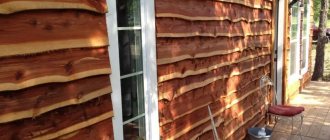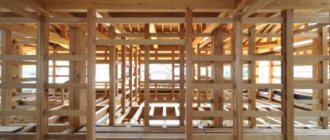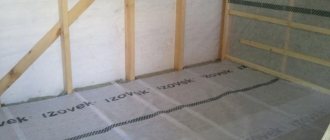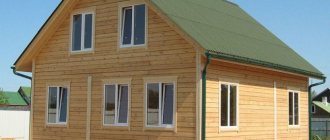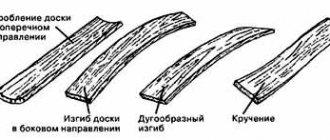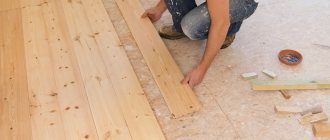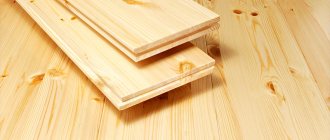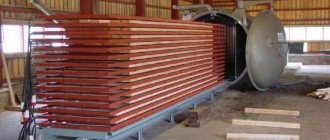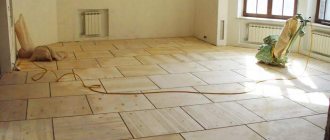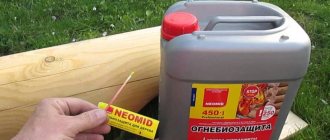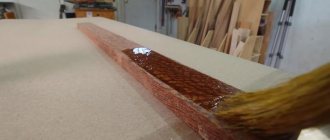Articles
All photos from the article
Edged softwood boards according to GOST are one of the most common building materials. It is used in a wide variety of operations and also serves as a raw material for the production of furniture, carpentry and other products.
In our article we will tell you what requirements are put forward for coniferous boards, and also briefly describe the methodology for their production.
A variety of building materials are made from pine, spruce or cedar
Spruce, larch or pine?
– Boards sawn to size at a sawmill are usually called edged boards. Not a single construction site is complete without such a board. There are many myths among people about how to choose them correctly. They say that boards from wood cut down in winter are better than those from summer wood, they dry out less and do not rot for a long time. It is believed that preference should be given to boards made of pine or larch, but it is better not to take spruce boards, as they will begin to warp after drying. What is the truth here and what is the myth?
– When purchasing edged boards, you will not be able to check in any way whether they were cut from a winter forest or not. And I don’t see much point in doing this, there is not much difference between them. If we talk about wood species, we mainly saw pine and spruce. Many people don’t even distinguish between them; they call them coniferous. Although, of course, there is a difference. The material made from spruce is less dense, it is lighter than pine, and it is also visually different: the spruce has smaller knots, the wood is lighter. There is nothing wrong with buying spruce boards. Even if the board became crooked during storage, it means that it simply dried unevenly. The only disadvantage of this material is that due to the lower density of the wood, the spruce board is easier to dent, so it is usually not placed on the floor. But there are also those who specially make the steps of a staircase in a house from spruce boards - spruce is warmer to the touch, and it will be pleasant to walk on such stairs barefoot.
We also widely sell larch boards. Its wood is denser, it weighs almost twice as much when compared to a fir tree: a cubic meter of spruce weighs 350–400 kilograms, a cubic meter of larch weighs 700. Larch is an excellent finishing material, suitable for walls, ceilings, often larch boards placed on the floor of the bathhouse. The only negative is that even after chamber drying, boards made from this wood dry out greatly and cracks form.
The moisture content of lumber is determined with a moisture meter. Kiln-drying boards should have an index of 8–12 percent. If it is above 20 percent, such a board will begin to mold. Photo: Alexey Kunilov
Cones. Differences
For many, the similarity of coniferous trees makes it difficult to determine at first glance which is pine and which is spruce. An important sign of difference are the bumps, especially if you look closely at them up close. Both plants have both female and male seed carriers. They distinguish one from another by external characteristics and the structure of their scales.
- The variety of cones in pine trees is associated with the variety of varieties, which determine both the specific shape and size.
- If we take the common pine as an example, its fruits can have a group or single arrangement.
- Male fruits have a cylindrical shape, while female fruits have a characteristic flatness. Their length quite often reaches eight centimeters.
The shade of young cones is close to purple, even black. By the time of final ripening, the color becomes reddish. Brownish fruits are also found. If you see red shoots with scales on the stem, then such cones have all the female characteristics.
The arrangement of male fruits can usually be found on the same branches as the female ones. Only their shade is different, yellowish. Of course, male shoots are much more noticeable and are always clearly visible.
The shape of fir cones resembles an elongated oval. The length can be from fifteen to seventeen centimeters. Their upward position makes them look like candles.
Female specimens are larger in size when compared with male ones. They are attractive due to their vibrant red hue. Usually they decorate the crown in the upper part, where they are picturesquely located at the very ends of the branches. Male fruits look inconspicuous and are smaller in size.
Floor board
– Why do tongue and groove floor boards come in different thicknesses and widths? How to choose them correctly?
– If the subfloor is already laid from edged boards, then you can put the thinnest tongue-and-groove floor board with a thickness of 27 millimeters on top, because in this case there is no point in buying a thicker one. The most popular flooring board, due to its versatility, is 35 millimeters thick. The width of the floor boards is also different, some are wide - 135 millimeters, some are narrower. Often they take a wide board, although a narrow one is best for the floor. I’ll tell you a secret: a narrow board shrinks less, which is why professionals choose it.
Nikolay Chernyshev has been selling lumber for many years. Photo: Alexey Kunilov
Types of softwood edged boards
First grade edged board
There are five types of edged boards and four types of softwood timber. The main difference is humidity. The highest, 1st, 2nd and 3rd grades have a moisture content of no more than 22%, while the fourth grade is not limited by this indicator. Let us list the main characteristics of each variety.
- Top grade
This edged board is made without dry knots. 10% deep and 16% shallow cracks at the ends are allowed. There should be no fungus or mold on the material.
- First grade
The main requirement is smooth geometry. The number of knots is maximum 20%, shallow cracks 26%. Fungi and mold are allowed no more than 10% of the entire area. Rotting areas are not allowed in the summer. The first grade of edged softwood boards is especially popular in the construction of houses.
- Second grade
This variety has a significant advantage - affordable cost. The presence of black spots, mold, and fungi is acceptable. The slope of the fibers is also greater than in the first grade. Second-grade edged boards are popular in the manufacture of formwork.
- Third grade
The fourth grade of edged boards
The number of black spots in this variety is permissible, provided there are four pieces per linear meter. Deformation and double core are common. Knots and cracks are acceptable up to 50% of the area, but no more. Third-grade edged boards are used for pallets or temporary structures.
- Fourth grade
It is the lowest grade. The number of black spots reaches six per linear meter. Wood with rotten areas can be found in 10% of the total mass. Deformation and the presence of wane in any quantity are acceptable.
Lining
– This finishing material is very popular. What should you consider when choosing it?
– If you need lining for a bathhouse, then you need to take it from wood species that do not emit resin. In our region this is aspen, linden, and alder is also found. Linden is more durable than aspen and smells better, but is 30 percent more expensive. Outwardly they look similar, many don’t even differentiate, but linden has a slightly creamy tint, aspen is lighter.
Products made from expensive and cheap types of wood are sometimes very similar. So, on the left the boards are made of linden, on the right - from aspen. Photo: Alexey Kunilov
– Some people have a prejudice against aspen.
– There is something that is supposedly bad energy. Probably manufacturers of linden products start such rumors (laughs).
The cost of lining, depending on the quality, can range from 130 rubles per square meter and up to 890. This is how much linden lining, grade A, costs. Photo: Alexey Kunilov
– Some people think that covering the walls with clapboard inside a house is bad form...
- Why? It's cheaper than plastering them. Plaster absorbs odors, and in a room upholstered with clapboard, even if you smoke, after 10 minutes there will be no more smell.
If you stock up on a tape measure when buying a board, it will be difficult to deceive you. Photo: Alexey Kunilov
Coniferous lumber. Advantages and disadvantages
Everyone knows that coniferous trees were widespread on our planet millions of years ago.
After all, amber is nothing more than the petrified resin of these mighty relics. And today, tens of millions of coniferous trees form huge groves in all parts of the world, and wood is used by humans for almost the entire period of the existence of our civilization. The most interesting thing, as experts note, is that there is still no consensus on the advantages and disadvantages of softwood lumber. The reason for the disagreement is the serious differences in properties between different breeds. If you do not take into account such exotic forms as thuja, yew, cypress and juniper, only 5 varieties of conifers are found in Russia: pine, spruce, fir, cedar and larch. This article talks about the features of their wood, the advantages and disadvantages.
Pine
Pine lumber is the most popular among all coniferous species. The point is not only in the abundance of wood and ease of preparation, but also in strength, low thermal conductivity and sufficient resistance to rotting. The wood has a well-recognized golden texture with a very beautiful pattern, which is valued in furniture making and finishing work. Pine lends itself perfectly to all types of processing, is environmentally friendly and durable, which, combined with a reasonable price, makes it one of the best building materials.
Disadvantages include a thick layer of sapwood, as the loose top layer of the trunk is called. When sawing, this layer usually remains, which leads to the appearance of specific defects. However, modern drying and processing methods reduce the consequences of this deficiency to a minimum, as well as the tendency of pine lumber to crack.
A high percentage of resin content causes a lot of controversy, since this can be considered both an advantage and a disadvantage. On the one hand, thanks to the resin, eurolining or a block house acquires increased strength and resistance to rotting, and the subtle aroma of the forest exuded by the boards contains phytoncides that are beneficial to health and, among other things, is an excellent antiseptic. On the other hand, not everyone likes resinous discharge on the surface of a lining or other cladding board.
Spruce
Spruce lumber is the cheapest. At the same time, the wood is very light, which means an increased content of microvoids, and therefore has improved thermal insulation properties. The same factor explains the excellent plasticity of spruce, which makes it suitable for both mechanical and manual processing. Spruce parts are perfectly glued together, and its surface is perfectly polished. Almost all types of moldings are made from it, as well as block houses, linings, etc.
Spruce also has another unique quality, thanks to which this tree has been used for centuries to make expensive musical instruments. Numerous microscopic resin pockets after ten years (or longer) of drying turn into voids, making ordinary spruce, so-called. resonant. This is exactly how the violins and guitars of the legendary Italian masters Stradivarius and Amati, now worth entire fortunes, were made.
Some difficulty for processors is the abundance of knots, although sometimes this is perceived as an advantage, since such inclusions rarely fall out, and after special processing they are fixed very firmly. After polishing, beautiful, light wood, decorated with picturesque knots, looks great in the interior. Other disadvantages include low resin content, which makes spruce lumber less resistant to moisture, but this same fact expands the conditions for their use.
Cedar
Cedar is a tree with a unique combination of physical properties. It has no equal, as experts note, in ductility, as well as in the level of thermal and acoustic insulation. Scientists are also aware of the healing properties of cedar boards, which, due to their high resin content, release biologically active substances that can relieve fatigue, which is especially valued when decorating baths and saunas. Noble wood is not sharpened by beetles, it is perfectly beautiful, providing great opportunities for furniture makers and designers.
By the way, the world-famous cedar pencil board, especially widely known during the Soviet era, has no worthy analogues, including such an alternative as American juniper. The only disadvantage is the rarity of cedar, which naturally entails an increase in the cost of products made from it.
Larch
Larch is a unique coniferous plant that combines the advantages of both coniferous and deciduous species. The density of its wood is not inferior to oak, and over time, larch boards, lining or moldings become stronger and stronger. This is one of the few tree species that does not require biological protection.
The latter leads to increased demand for cladding boards and other larch lumber where special environmental friendliness is required. It is worth noting the unique moisture resistance, thanks to which larch is used to make boards for terraces, lining for bathhouses, etc.
Disadvantages include the special composition of resins, which makes gluing parts difficult, as well as the tendency of the boards to curl around the center line.
Fir
Fir has the lightest wood of all coniferous species, which is explained by the special structure of its fibers. The low density is also due to the low resin content, which, on the one hand, makes fir suitable for use in conditions of elevated temperatures, and on the other, reduces its resistance to rotting.
But, according to experts, the amazingly beautiful reddish texture makes it in demand in furniture production, where fir serves as an excellent alternative to expensive cedar. In addition, recognizable and low-resin wood is used for the manufacture of various types of cladding boards, eurolining, etc.
The main disadvantage of fir is its ability to absorb moisture, however, this only complicates and makes the production process somewhat more expensive and has little impact on end consumers.
Source: https://www.eurovagonkadom.ru/inform/primenenie/hvoinie-pilomateriali/
Block house**
– This material imitates the outer part of a log, it looks beautiful, but is it justified to cover the outside of a house with it?
– In the Urals, wood is affordable for many people, thank God. In addition, finishing a house with a block house is comparable in cost to using plastic for this purpose - vinyl siding. And although natural wood looks more impressive, it has its drawbacks: in the open air it will become resinous and begin to deteriorate. It makes sense to use a block house when you need to hide some irregularities. Frame houses covered with a block house look beautiful - they can’t be distinguished from log houses.
The magical properties of spruce
Popular beliefs endow spruce with strong mystical properties. The tree is used in cleansing rites and rituals to protect against otherworldly forces, and is used in meditations aimed at streamlining thoughts and feelings. The plant helps restore mental balance in case of excessive temper, helps to control oneself and look at things soberly.
At the same time, it is not recommended to stay in contact with spruce for a long time if you are prone to melancholy; the tree can aggravate the condition. It is also believed that in the summer months the plant can draw strength from a person, while in winter it releases accumulated energy.
Terrace board
– This material is relatively new, where does it go?
– It is mainly used near the pool, near the house, on the terrace. Thanks to the longitudinal milling of the board, you won’t slip on it. These boards are made from larch; it is more durable than pine.
The deck board can be used near the pool, near the house or on the terrace. Photo: Alexey Kunilov
Lifespan
Another important difference between spruce and pine is life expectancy. Pine lives on average about 300-350 years
Most trees of this age grow in the Russian taiga, Europe and the Balkans. However, there are exceptions to the rules in the world. For example, the maximum lifespan of an ordinary species was 1000 years. Pine trees grow in places inaccessible to people, the age of which has already exceeded 5000 years.
As for spruce, it lives a little less than pine - 200-300 years. Black spruce trees native to America can live up to 350 years. Each type of tree has its own long-livers. For example, in the USA, in a district in eastern California, there is a specimen over 5,000 years old. Another long-liver is a tree that has been growing in Sweden for more than 9,500 years.
Natural disasters, the harmful influence of people, drought or fires - all these conditions negatively affect the life expectancy of trees.
Shelf board
– A shelf is an attribute of any bathhouse; the boards on it should not burn or release resin. What type of wood should I choose for it?
– Wealthy buyers use boards made from African abash wood for these purposes. It has a porous structure, it does not heat up, but it is expensive - 380 rubles per linear meter, a 2.5 meter board will cost almost a thousand rubles. And you need a dozen or more of these. Linden is also suitable for these purposes, and aspen is a budget option.
The most expensive lumber is a board made from African abash wood. Photo: Alexey Kunilov
Selection rules - expert advice
In stores, the declared quality does not always coincide with the real one. Therefore, we recommend paying attention to the following nuances of wood:
- The number of annual rings in a vertical section is an indicator of quality. The more there are and the closer they are to each other, the higher the quality. If you see many annual rings, it means that the radial sawing was carried out according to the rules. The closest arrangement of the rings means that the annual growth of wood is minimal, it is strong and moisture-resistant. By the way, it is better to buy edged boards in regions with cold climates. The colder it is, the higher the quality of the wood.
- A wet edged board should absolutely not be used. How do you know how wet it is? First of all, pay attention to the way the seller stores it. This should be a dry room or shed.
- Humidity should not be more than 22%. A deviation of 3% in both directions is allowed. But there is no need to choose a tree that is too dry. Its price is higher, but during operation the humidity will still increase.
- The presence of a core is not allowed. Its presence means the tree is susceptible to rotting. Sometimes manufacturers do not advertise the meaning of the core, but, on the contrary, claim that it is a unique pattern and unusual structure. Don't fall for such marketing ploys.
Determining the type of wood is quite difficult. What remains to be done? Make purchases from trusted companies that value their reputation and do not set out to deceive customers.
We present high quality edged softwood boards. We offer affordable prices, provide assistance in selection and delivery.
Important!
How lumber sellers deceive buyers
* The most common deception is underestimating the width of the board. Let's say you buy a lining 95 millimeters wide. In fact, it turns out to be only 85 millimeters. The seller proves the opposite, and in front of you measures the width of the board along with the tenon - it turns out 95. But the tenon cannot be counted when determining the size of the board, it does not add usable space to the buyer, but allows the seller to make money.
The grade of the board is determined by the manufacturer or seller himself. This board can in one case be considered grade A, in another - grade B and even C. Photo: Alexey Kunilov
* Another trick of sellers is that they can determine the grade of the board at their discretion. This product is not subject to mandatory certification, and everything depends on the conscientiousness of the sellers themselves. And it turns out: the same variety, taken from some sellers, looks perfect, but from others - with many cracked knots.
Tongue-and-groove* boards are boards on the edges of which a tongue (protrusion) and groove are formed with special cutters.
When you go for the clapboard, take a tape measure with you. Sellers often attribute the tenon size to the width of the board, which cannot be done. Photo: Alexey Kunilov
Block house** is a planed lining board with a segment of rounded logs or profiled timber on one side. Designed for interior and exterior decorative finishing of premises and buildings.
- Published in No. 24 of 02/09/2019
Features of needle forms
You can distinguish spruce from pine by their shape, which varies among trees. In general, the main distinguishing feature is the time period during which the “coniferous garment” changes, that is, old needles are replaced with new ones.
Spruce needles are dark green.
- The shape is similar to a needle, which can be two centimeters long. She walks along the branch, forming a kind of spiral.
- The sheet plates, in this case, form a whorl. They attach one by one to a branch.
- The needles fall off slowly and imperceptibly, so that from the outside it seems that it is constant.
- New needles grow within seven years, sometimes over a longer period of twelve years.
The needles of pine trees are bluish-green.
- Their shape gradually tapers from base to tip.
- The length is most often four centimeters, but in certain conditions reaches six centimeters.
- They are located in pairs on the branches. Unlike spruce, pine changes its “robe” every year.
- This happens in the autumn. And two years are enough for needles to completely renew themselves.
Spruce needles tend to always have the same dark green color, which remains the same all year round.
In pine needles they are somewhat lighter, and the presence of yellowness with the onset of autumn is considered a distinctive characteristic feature.
The use of spruce and pine in construction
Builders prefer to use pine wood. Its trunk is straighter, without defects and knots. Pine wood is soft and can be easily impregnated with antiseptics. It is also easy to machine.
Spruce has knotty wood and is more difficult to impregnate with antiseptics. It tends to strongly absorb water, so it is completely unsuitable for external work. Spruce wood is used for interior decoration.
Sources:
- https://lesoteka.com/derevya/el-i-sosna-otlichiya
- https://waysi.ru/uchastok/rasteniya/el-i-sosna-kakie-obsie-priznaki-i-cto-ih-otlicaet.html
- https://hvorast.ru/sosna/sosna-obiknovennaya
- https://NewDerevo.ru/hvojnye-derevya/el-obyknovennaya
- https://kratkoe.com/ispolzovanie-eli-chelovekom/
- https://poleznii-site.ru/lekarstvennye-rasteniya/el-poleznye-svoystva-hvoi-smoly-pyltsy-i-protivopokazaniya.html
- https://stroy-podskazka.ru/el/i-sosna/
- https://alltravnik.ru/derevya/otlichie-elki-ot-sosny
- https://fermilon.ru/sad-i-ogorod/derevo/otlichiya-eli-i-sosny.html
- https://www.syl.ru/article/367942/chem-otlichaetsya-sosna-ot-eli-opisanie-i-sravnenie-derevev
